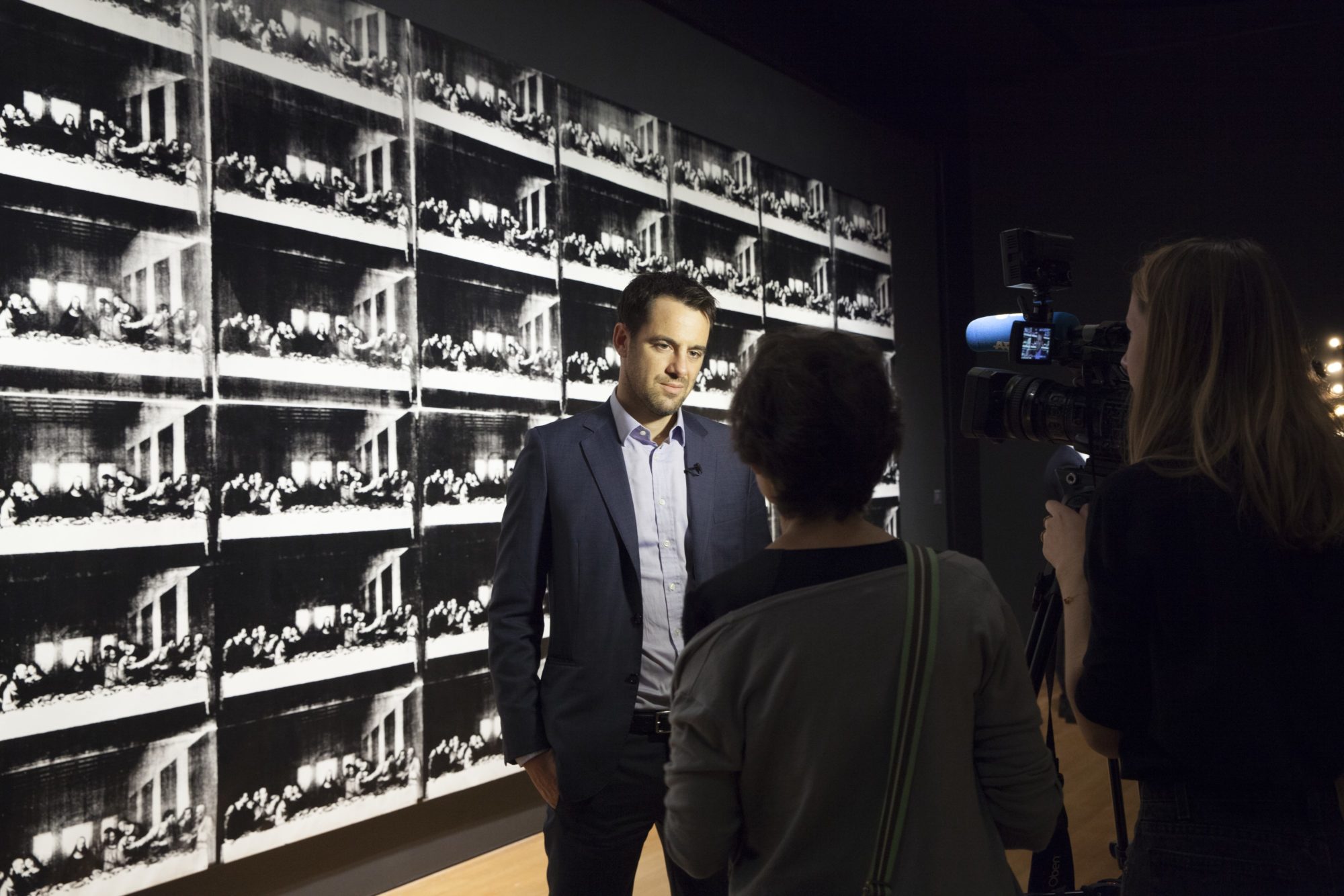
Loïc Gouzer was at the height of a heady career when he resigned from Christie’s as its co-chairman of postwar and contemporary art last month. The auction rainmaker who masterminded record-breaking deals including the $450 million sale of Leonardo da Vinci’s Salvator Mundi and David Hockney’s $90.3 million Portrait of an Artist (Pool with Two Figures), Gouzer shook up the industry with his aggressive approach to winning consignments, his innovative sales strategies, and an innate understanding of marketing.
artnet News spoke with the Swiss auctioneer about what he plans to do next.
Why did you choose to leave Christie’s now?
I don’t know. I’ve always been very instinctive with my career choices and the decisions I’ve made with paintings at work. My gut just told me it was the moment to do it. There was no precise trigger or anything, I just had a great run. I had a lot of fun and wanted to leave on a high note.
What are your plans for the future, both short term and long term?
Paul Simon once said before you set your sails you have to drift in the breeze. So that’s what I’ll be doing for at least the next six months. I’m going to take time to think about the last seven years at Christie’s and then I want to come up with a philosophical business plan and then a practical on—a real life business plan. I’m most likely going to do something on my own, and use what I’m good at—my eye—which was always my main strength at work. Hopefully I’ll use it to build my own thing.
Leonardo da Vinci, Salvator Mundi. Courtesy of Christie’s Images Ltd., 2017.
Can you tell me more about what you mean by doing “your own thing?”
I have a pretty good idea of what I want to do, but I don’t want to talk about it at this stage.
How did the behind-the-scenes market compare to the public auctions at Christie’s? Which was larger?
Everyone wants to know what goes on behind the curtain, but I always thought that if you pull up the curtain it would be so disappointing that people would not be interested anymore. It’s often way simpler and way less exciting than what people imagine when they don’t know the answer. Once you know the answer it’s almost always a letdown. I’d say that the mystery of the art market is its mystery. If you take away the mystery then it would not be mysterious anymore.
Do you know who you successor will be?
I think Alex [Rotter] is now the sole chairman of Christie’s. His reputation is already established. He’s an amazing guy, an amazing leader, an amazing deal-maker. The whole department is actually very strong, very solid, and extremely knowledgeable. It’s going to be good for them, there’s going to be interesting years to come. I’m not just saying that to say it. I really believe there’s an unbelievable team at Christie’s. In the last few years I was not doing every big deal. Everyone was involved in big deals and we were all working as a team and helping each other out. That was the biggest difference after the old timers left, we became extremely collaborative. We upload our knowledge and market information to our collective cloud at Christie’s and we work that way. I think the last two years have been much less about individuality than it was before. There’s always a specialist or an expert that’s going to be a bit more in the spotlight, but the reality of the terrain is that we were part of a very collaborative way of working and it’s going to continue that way. The hydra has many heads. This department is going to continue to be very successful.
David Hockney, Portrait of an Artist (Pool with Two Figures) (1972). Courtesy of Christie’s Images Ltd.
You’ve been involved in a lot of environmental causes. Is that something that you’re going to devote more time to now?
I’m pretty engaged with my foundation, Oceana, on which I sit on the board, and also with Leonardo DiCaprio and his foundation. These are my two go-to places to try to leverage the connections and access to capital I have to try and make a difference. I’m happy to have a few months where I can actually focus more on that. There was a point where I was like, “Loic, stop it with your conservation stuff, you’re annoying everybody.” But I think everyone is waking up to the fact that this is the big underlying problem of everything. As much as I love art and have a passion for it, there’s always a part of me that thinks everyone should do whatever they can to save our planet, because while museums and collections are great, they’re not going to be as interesting when they’re flooded with water.
It’s good to do something for the greater good sometimes. I know it might sound naïve or utopian, but I don’t want my kids to ask me, “What did you do? Everybody knew what was going on.” I don’t want to have to say that I didn’t think about it or that I had better things to do. This is the biggest crisis of our time and I think everyone should do what they can with the means they have.